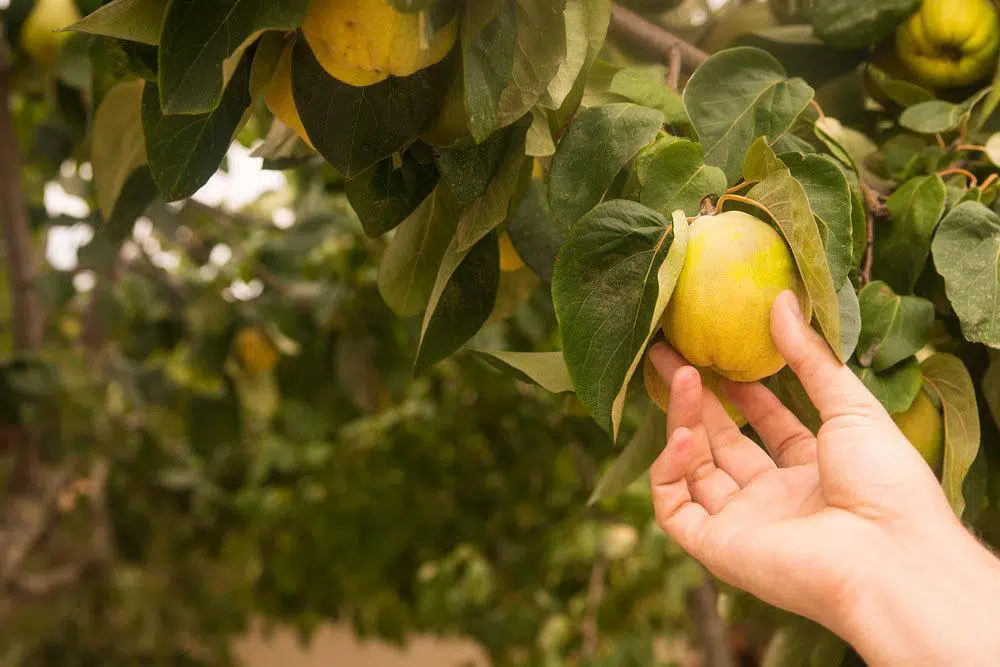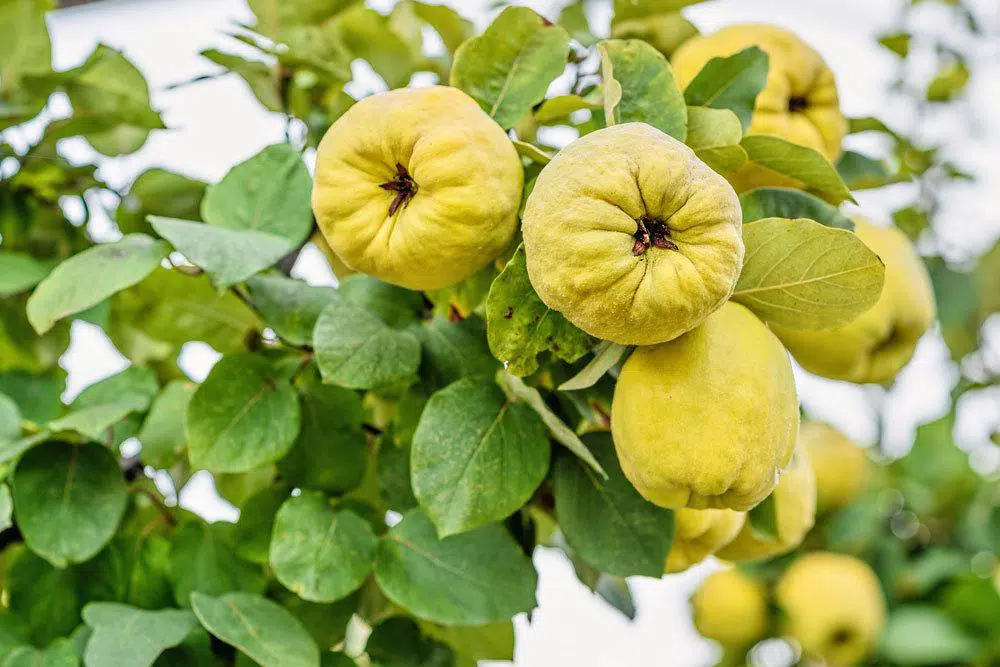Quinces (bot. Cydonia oblonga) are one of the most popular fruits in European gardens thanks to their fresh, slightly bitter lemon aroma. Originating from the Caucasus, the fruit is mainly known in the Mediterranean region and has no problems thriving in, which subsequently leads to the popular quince harvest. You also have a quince tree in your garden and are now wondering when you can harvest the furry, yellow quinces?
Contents
Harvest time
The harvest time of the quince is strongly dependent on the location and the weather. Since it actually originates from warmer areas, where it can ripen faster, the fruits can be harvested at all only at the end of the season. Cydonia oblonga has different harvesting seasons that are close together and like to blend into each other. When you can harvest the quince is listed below.
Beginning of October
At the beginning of October, quince harvesting in Europe is only possible if the weather cooperates and the care is right. Quinces are extremely sun-hungry and tolerate cold weather poorly. For this reason, in southwestern Europe such as Baden-Württemberg, the Palatinate and western Bavaria, the fruits often show up at the beginning of October. However, if the weather is particularly harsh, this date may move further back.
Mid to late October
The rest of Europe usually doesn’t see quince until the second half of October, and even frequently in late October and less often in early November. The more northerly the quince grows, the longer it takes for the fruit to ripen. Likewise, it takes longer at altitudes that are cooler than the lowlands.
In summary, October is the typical harvest month for Cydonia oblonga and thus the quince represents one of the last fruits of the year ever. This makes it a fruit booster through the winter due to its many uses.
Tip: The individual harvest seasons of quince can be extended if you choose late-ripening and early-ripening varieties. For example, you can choose a variety that can be harvested in late September, while another is ready in mid-October and yet another in late October, significantly increasing potential yields.
When to harvest during the harvest season
In quince, the harvest time itself does not directly describe when it should be harvested, but only the period during which harvesting is possible. In the case of “honey apple” it is necessary to pay attention to the following points, which determine the perfect time for harvesting.
- Color of the fruit
- Fuzz of the fruits
- Night frosts

Use
At the beginning of fruit formation and throughout the period until harvest, quince fruits are a light shade of green, turning more and more yellowish from late September and early October. Once the fruits have turned yellow, they can be harvested. However, they intensify in flavor if left to hang for a while. This is where the night frosts come into play. Feel free to delay harvesting the squill, preferably until the characteristic fuzz has fallen off, but harvesting should be done immediately when the first night frosts set in. The cold causes a strong loss of aroma.
Furthermore, the use is crucial:
- Jam and jelly: immediate harvest, since at this time the content of pectins is the highest
- Fruit juices: as late as possible, otherwise the aroma is too weak for the juice
- stewed fruit: depending on the intensity of flavor desired
- Liqueur: a little earlier than juice, should not be exposed to frost
These are only vague instructions, but they help to get the highest flavor potential from the fruit. In this sense, the timing of the harvest is up to you, only you need to pay attention to the color of quinces and the first night frost, so that you harvest neither too early nor too late. A great advantage about the fruits is the possibility to let them ripen on the windowsill for up to eight weeks. When doing so, you should not touch any other fruit, otherwise the ripening process will be negatively affected and possible pressure marks will occur, as quinces are extremely sensitive.
Tip: If you want to have something from your quince harvest for a long time or if you had a bountiful harvest, you should store the rest. At a temperature of about 2°C, the fruit can be stored for up to two months without any problems, which is sufficient for most of the winter.


